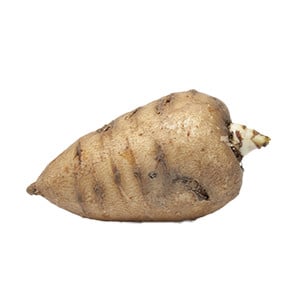Turnip-rooted chervil

Turnip-rooted chervil
Chaerophyllum bulbosum
Plant family
Umbellifers (Apiaceae)
Also known as
Tuberous-Rooted Chervil, Bulbous Chervil, Parsnip Chervil
Season Overview
Sowing
Harvest
J
F
M
A
M
J
J
A
S
O
N
D
Details
Light requirement
Sunny
Water requirement
Moist
Soil
Light (sandy)
Nutrient requirement
Low
Plant distance
25 cm
Row spacing
6 cm
Seeding depth
1 cm
Instructions
The season for this plant has not yet begun. The following instructions are for the beginning season.
Mid of October
Sowing
Mid of October
Thinning
Beginning of November
Weeding
Every week
Description
Chervil is an almost forgotten, very old cultivated plant. It belongs to the family of umbelliferae. The beet forms blunt thick roots that can grow up to 10 cm long. The leaves are pinnate light green and its white flowers are in umbels. The chervil beet is biennial. In the first year it forms the beet and a rosette of leaves. In the second year it flowers and produces seeds. It can reach a height of more than one meter.
Origin:
The wild form of the chervil beet is native to Central Europe.
Growing tips
Chervil beet belongs to the frost germinators, so sow it in September to December. The chervil beet prefers to stand on moist, deep and permeable soil. Sowing works similarly to carrots. Mix the soil with some sand and sow the seeds about 2 cm deep with a row distance of 25 cm. Germination does not occur until spring. In the young plant stage, the plantlets are still very weak in competition and need more intensive care. For this purpose, hoe the rows regularly to remove weeds. Alternatively, you can also mulch. This will save you a lot of work and keeps the soil moist. In June/July the weeds will yellow and the beet can be harvested.
Companion Plants
Antagonistic Plants
Diseases
Powdery mildews
Pests
Aphids
Carrot fly